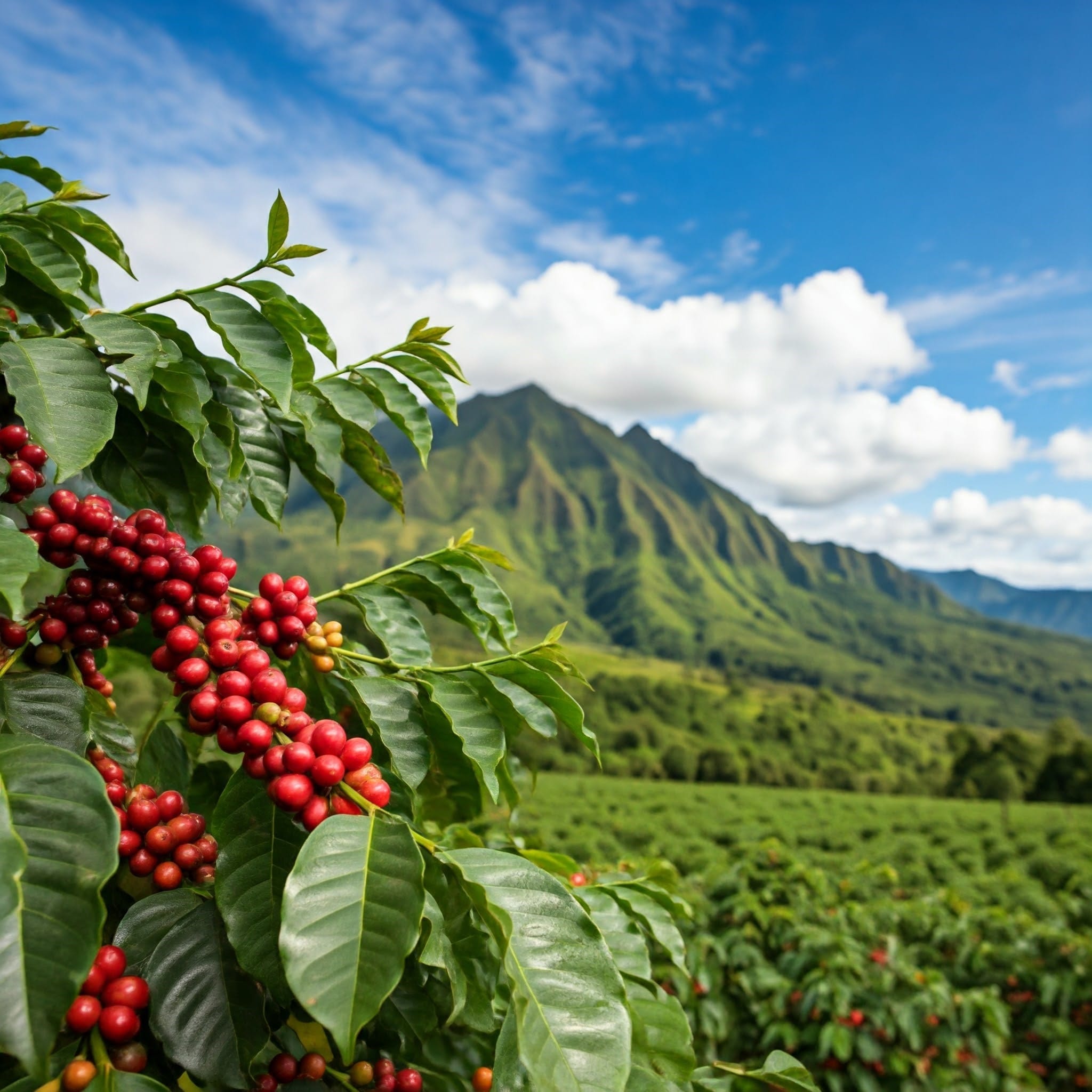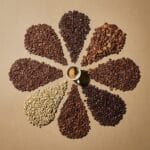Welcome back, coffee detectives! In our previous articles, you’ve explored the incredible diversity of coffee flavors through tasting flights and single-origin coffees. Now, it’s time to unravel the mysteries behind these unique profiles and discover how terroir and climate shape the taste of your daily brew.
The Terroir Factor: A Coffee’s Fingerprint
Just like a fine wine reflects the essence of its vineyard, a coffee’s flavor is intimately connected to its place of origin. This concept is known as “terroir” – the unique combination of soil, climate, altitude, and other environmental factors that leave an indelible mark on the beans. Let’s explore the key elements that make up a coffee’s terroir:
- Soil Composition: The earth beneath the coffee tree is a complex mix of minerals, organic matter, and microorganisms. This unique recipe influences the nutrients available to the plant, ultimately shaping the bean’s flavor profile.
- Altitude: As you climb higher, the air gets cooler and thinner. Coffee grown at lofty altitudes tends to develop more slowly, resulting in denser beans with complex flavors.
- Microclimate: Even within a single region, local variations in temperature, humidity, rainfall, and sunlight can create distinct microclimates. These subtle differences can yield surprising flavor nuances.
- Surrounding Vegetation: Coffee plants thrive in the company of other flora. Shade trees, for example, can protect the coffee from harsh sunlight while also contributing unique flavors through fallen leaves and natural mulch.
The Climate Connection: A Delicate Dance
While terroir sets the stage, climate is the choreographer, dictating the intricate dance of coffee growth and development. Here’s how climate pulls the strings:
- Temperature Tango: Arabica coffee, the prima donna of the specialty coffee world, prefers a comfortable temperature range of 60-75°F (15-24°C). This Goldilocks zone allows for slow, steady maturation and complex flavor development.
- Rainfall Rhythm: Coffee plants crave a steady supply of moisture, with most varieties needing around 60 inches (1,500 mm) of rainfall per year. But it’s not just about quantity – the timing of the rain also plays a crucial role in the coffee’s growth cycle.
- Altitude Attitude: Higher elevations often boast cooler temperatures, allowing coffee cherries to ripen slowly and develop more intricate flavors. It’s like aging a fine wine – the slower the process, the more nuanced the result.
A World Tour of Terroir
Ready to taste the world? Let’s explore how terroir and climate shape the iconic flavors of some famous coffee regions:
- Ethiopia: The birthplace of coffee is a terroir treasure trove. Ethiopia’s high elevations, diverse microclimates, and ancient heirloom varieties yield coffees with unparalleled fruity, floral, and tea-like notes.
- Colombia: Colombia’s rugged Andean landscape and tropical climate create the perfect symphony of warm days, cool nights, and ample rainfall. The result? Coffees with a harmonious balance of nutty, caramel, and chocolate flavors.
- Indonesia: From the volcanic soils of Sumatra to the lush forests of Java, Indonesia’s islands offer a kaleidoscope of terroirs. The coffees here are known for their bold, earthy tones and full, syrupy body.
The Changing Climate of Coffee
As our world’s climate shifts, coffee terroirs are facing new challenges. Rising temperatures, altered rainfall patterns, and increased pest and disease pressure are reshaping the global coffee map. Some traditional growing regions may become unsuitable, while new areas may emerge as coffee havens.
Supporting Sustainable Practices
As a coffee lover, you have the power to support the farmers and communities stewarding these precious terroirs. Here’s how:
- Choose Sustainability: Look for coffees with certifications like Rainforest Alliance, Fair Trade, or organic. These labels signify eco-friendly farming practices and fair compensation for farmers.
- Embrace Direct Trade: Some roasters form direct partnerships with farmers, investing in their communities and supporting their efforts to adapt to climate challenges.
- Explore and Experiment: By adventurously trying coffees from diverse origins, you support farmers nurturing unique terroirs and help maintain the beautiful mosaic of flavors in the global coffee landscape.
The Journey Continues: Roasting’s Role in Flavor
Now that you’ve explored the fascinating world of coffee origins and the impact of terroir, it’s time to dive deeper into another crucial aspect of coffee flavor: roasting!
In the upcoming Bloom 202: Roasts and Their Secrets, we’ll uncover how different roast levels can transform the taste of your coffee, from the bright acidity of light roasts to the bold, smoky notes of dark roasts. You’ll learn how to identify different roasts, understand the roasting process, and choose the perfect roast for your brewing method and taste preferences.
Get ready to unlock the secrets behind the perfect roast and elevate your coffee brewing to new heights!





No Comment! Be the first one.